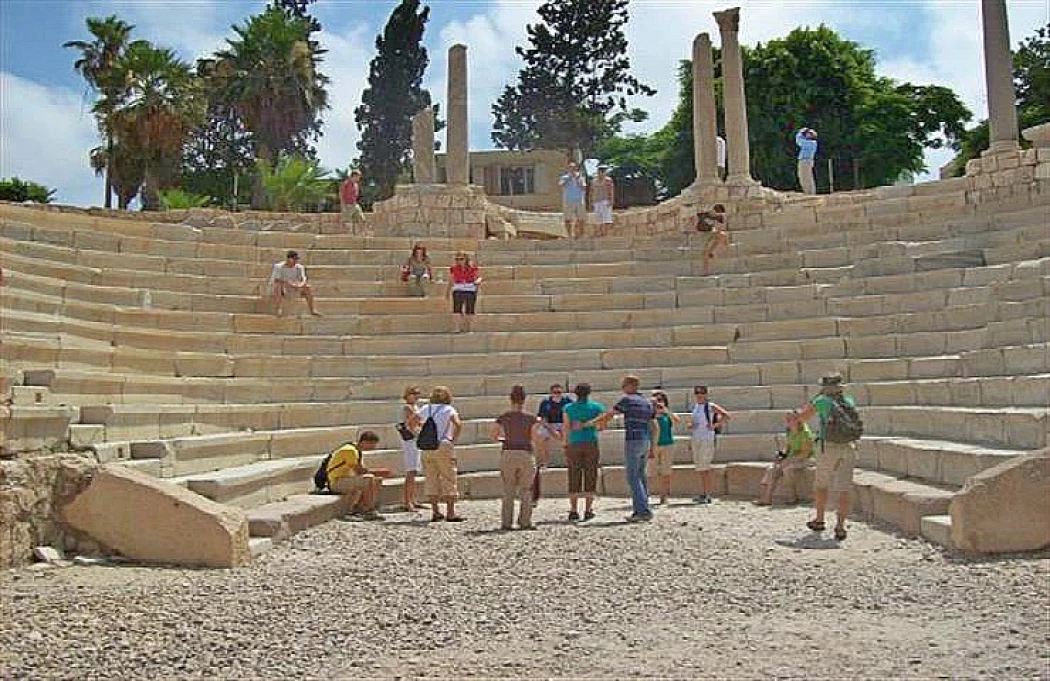
The Greco-Roman Era in Egypt | Egypt Roman Period
The history of Roman Egypt began with the defeat of Egypt in 30 BC by Octavian (later Emperor Augustus Caesar) after defeating Mark Antony and the Ptolemaic Queen Cleopatra VII at the Battle of Actium.
Egypt then became a province of the Roman Empire and included most of modern Egypt, with the exception of the Sinai Peninsula. Both provinces, Cyrenaica to the west and the Arab countries to the east, bordered Egypt. Egypt played the role of the main producer of grain for the empire.
The Ptolemaic Dynasty: A Melting Pot of Cultures
Under the Ptolemies, Egypt experienced a time of relative stability and prosperity. They were Greek-born rulers who considered themselves heirs of the pharaohs; hence, they adopted titles and shaped patronage from Egyptian gods, as well as temples constructed in the usual Egyptian way.
They have also kept their Greek background and, therefore, interesting cultural synthesis. They boost Greek philosophy, art, literature, and of course the Greek language. But this was most seen in a city such as Alexandria, built by Alexander the Great, where the characteristics of fusion between Greek and Egyptian culture were visibly apparent.
Perhaps it was also the center of learning and scholarship at the time, hosting what they call the famous Library of Alexandria, the largest and most notable library in the ancient world.
Likewise, the influence of the Ptolemies was great over Egyptian religion. They were portrayed in Egyptian-style art and many statues as divine Egyptian pharaohs, while they found Greek gods and cults alongside the traditional Egyptian pantheons.
Thus, a hybrid religious landscape combining the gods of Egypt with those of Greece was formed.
Cleopatra VII: The Last Ptolemaic Queen
Such was the fame of Cleopatra VII as an individual; also, she was Egypt's last queen. She reigned between 51 and 30 BCE. Cleopatra is typically regarded as the most well-known of all Greco-Roman figures that are representative of Egypt. She is famously known for guile, political savvy, and sexual affairs with even powerful Romans such as Julius Caesar and Mark Antony, attempting to maintain Egypt's sovereignty while Rome was rising to power.
The end of Cleopatra's reign was characterized by the defeat of her forces at the hands of the Romans at the Battle of Actium in 31 BCE. Egypt was annexed by Rome right after this defeat. The end of the dynasty, as well as the independence of Egypt as a kingdom, was signified by Cleopatra and Mark Antony's suicides.
Roman Egypt: The Jewel of the Empire
Egypt is now incorporated as part of the Roman Empire. Nowhere could be found a province in the empire more important than Egypt. Egypt was the principal grain supplier for the ever-increasing population of Rome, centering all these on the soil of the Nile, which made it become the breadbasket of the empire.
Egypt was governed by a prefect, an official directly appointed by the emperor, while the Romans controlled Egypt. Egypt indeed allowed the Egyptians to continue much of their traditional customs, religion, and local administration, but it also brought extensive Roman imprints in architecture, governance, and culture.
This was because of the most momentous infrastructural change that Rome made to Egypt. It built roads, ports, and within cities. Alexandria remained, however, the most important city, as it continued to be a hub of culture and commerce, with some of its wonders including the library and the Pharos Lighthouse among the Seven Wonders of the Ancient World, as well as a major center of Greek learning.
Also, in this period, in the First Century CE, Christianity made its first inroads into Egypt but became entrenched as Egypt's religion by the Fourth Century, as the Coptic Christian Church came into being: an event of great significance, signifying the beginning of a long process of change in the religious landscape of Egypt.
The first Roman emperor was "Augustus," and he issued a special commemorative coin to mark Egypt's accession to his rule with a picture of a crocodile, the most famous of the indigo animals. Underneath it was written the phrase "Aegypto Capta," meaning the discovery of Egypt, and Egypt was coveted by the Romans economically. Egypt was financially rewarded, and a certain tax on wheat and crops had to be sent to Rome each year; that is, much of the Egyptians' income and agricultural produce went to Rome unaccounted for.
Many rulers succeeded each other on the throne of Rome from 30 B.C. to A.D. 396 CE. From about 300 to 400 CE, most Egyptians converted to the Coptic religion.
Alexandria, which Alexander the Great built on the Mediterranean coast, remained the capital of the country as the Library of Alexandria was built during the time of the Ptolemies. The Romans built the Roman Amphitheater in it, as it was home to about 300,000 people at the time. You can visit these monuments during your Egypt tours with Cairo Top Tours with Egypt tour packages.
Latest Articles
Admin
Seabourn Sojourn Cruise Stops in Safaga Port
The Seabourn Sojourn, the flagship vessel of Seabourn Cruise Line's ultra-luxury fleet, was built in 2008 at the T. Mariotti shipyard in Genoa, Italy. Measuring 198 metres, it can accommodate up to 450 guests in its 225 spacious all-suite staterooms.
Admin
Norwegian Sky Cruise Stops in Safaga Port
Norwegian Cruise Line operates a cruise ship called the Norwegian Sky. It was constructed in 1999 and can accommodate 2,004 passengers in addition to 878 crew members. The ship has several dining establishments, lounges and bars, a spa and fitness center, swimming pools, and a number of entertainment areas.
Admin
Explora II Cruise Stops in Safaga Port
Explora II, the second vessel in the Explora Journeys fleet, sets sail in 2024 to redefine luxury cruising. With 461 ocean-front suites, 9 culinary experiences, and 4 pools, this haven of sophistication and sustainability promises an unforgettable "Ocean State of Mind" journey to inspiring destinations.
Admin
Mein Schiff 6 Cruise Stops in Safaga Port
The Mein Schiff 6 is the latest cruise ship in the renowned TUI Cruises fleet, offering passengers a luxurious and sophisticated cruise experience. At 315 metres long, this floating resort features a range of dining options, entertainment, and recreational facilities, including a spa, fitness centre, and sports amenities.
Admin
Mein Schiff 4 Cruise Stops in Safaga Port
When the Mein Schiff 4 cruise ship docks in Safaga, Egypt, passengers are granted access to a realm of ancient wonders. Aboard this state-of-the-art vessel, guests can embark on meticulously curated shore excursions that showcase the region's most iconic landmarks, including the Giza Pyramids, the enigmatic Sphinx, and the remarkable tombs and temples of the Valley of the Kings in Luxor.
Admin
MS Europa Cruise Stops in Safaga Port
The Silver Moon, Silversea's latest flagship, is a luxury cruise ship that offers an exceptional travel experience for Venezuelans exploring Egypt. With a capacity of 596 guests and an impressive 40,700 gross tonnes, the Silver Moon maintains the small-ship intimacy and spacious all-suite accommodations that are the hallmarks of the Silversea brand.















